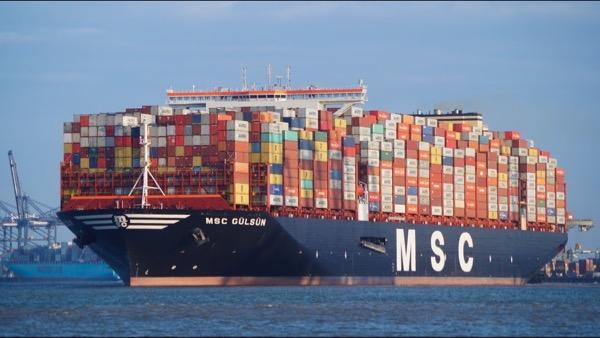The TV Supply Chain: Taking Stock

That drove me to contemplate the convoluted world of the supply chain. What’s a supply chain? According to Wikipedia, it’s “a system of organizations, people, activities, information, and resources involved in supplying a product or service to a consumer.” We rarely think of such things when shopping for a new television but bringing such a complex product to market, without disruptions that can have a major impact, is anything but trivial.
A simple analogy is the humble pencil. It doesn’t look like much something that could be assembled in the hundreds by one person in a single day. But think of what goes into it. First, we have the wood shaft, which must be formed into the traditional shape for a secure grip. This shaping requires specialized machinery. The rough shaft must then be painted. After that, the graphite (which we still call lead, but fortunately isn’t) is inserted into the shaft’s hollow center. I have no idea how they do that; it sounds simple but the fit must be precise and tight. Next comes the rubber eraser, which is held in place by a metal band securing it to the shaft.
All of these parts must either be produced in-house or acquired from outside vendors. If done in-house, specialized and expensive machinery must be acquired and maintained. Raw materials will be needed even with such in-house production. Putting the pencils together must be done on assembly lines with a skilled and/or unskilled workforce, or with robot machines. If the component parts are contracted out instead, to one or (more likely) several specialized companies, with the pencil factory just doing the final assembly, the situation becomes even more interesting.
What if the paint or graphite supplier runs low on supplies, or goes on strike, or has a fire, any of which will interrupt its production? The pencil factory must then either shut down until the critical parts become available or search for alternate suppliers. And the parts subcontractor has its own issues with its own suppliers. That’s why smart companies often have more than one source of supply for each critical component, or maintain a generous inventory of them just in case. But excess inventory takes up space, which is why industries sometimes rely on just-in-time parts delivery another source of potential problems.
I’m no business expert or industrial engineer, but the above gives some idea of the complexity of the modern, supply-dependent economy, and why disruptions can easily ripple through it given the sort of chaotic, once in a century (we hope) worldwide event we’re presently experiencing.

The same issues apply to television manufacturing to an even greater degree, given the vastly higher complexity of the product. Consider the Fujimaka TV company in Japan (obviously fictitious don’t look for them on Amazon). It likely buys some of its sub-systems, such as power supplies, imaging panels, and input/output jacks with their associated circuitry, either from other companies in Japan or from overseas. (Most TV makers closely guard their critical imaging circuitry, including their main processors, and make them in-house to keep subcontractors from stealing them!) To produce these farmed-out subsystems, the subcontractor in turn likely buys at least some of their component parts (such as resistors, capacitors, coils, circuit boards, and microchips) from other companies. And those other companies must obtain their raw material from yet other companies.
There is an exception to all of this; some manufacturers are vertically integrated; that is they produce all that they need under one roof (though not always literally; they might own physically separate factories for supplying each need). But even different divisions in a vertically integrated companies can sometimes descend into individual fiefdoms, with the right hand not knowing what the left hand is doing. This will generate issues similar to those that exist with separately owned companies and suppliers.
You can see how a supply chain can become incredibly complex. In normal times it usually flows smoothly, though even mid-sized companies might well have a staff dedicated exclusively to keeping the process from bogging down. In an emergency alternate parts that aren’t quite what the designers ordered might work and keep the line going. Shutting down an assembly line because the supply of a single capacitor value has run out, for example, can result in an economic crisis. The inventories of such supplies must be fully stocked, which is why they’re always ordered well in advance, sometimes by months.
But we’re living in interesting times today, and supply chain disruptions might well be inevitable. And since most of our TVs, and much else in the consumer electronics world, are currently imported, we also need to anticipate possible shipping delays, either on the ship itself or at both the departing and receiving ports. Then there’s the matter of appropriate shipping boxes for the product, and how an efficient number of them can fit snugly into a fixed-size, weight-limited shipping container. And you thought that making TV’s slimmer and lighter was only for the consumer’s benefit!
Most of today’s supply chains are at least as complex as the above examples. So if the particular make and model of new television or other video display you have your eyes on is out of stock, or hasn’t even arrived as yet, you might have to wait a bit. But hopefully the wait will be worthwhile.





























































